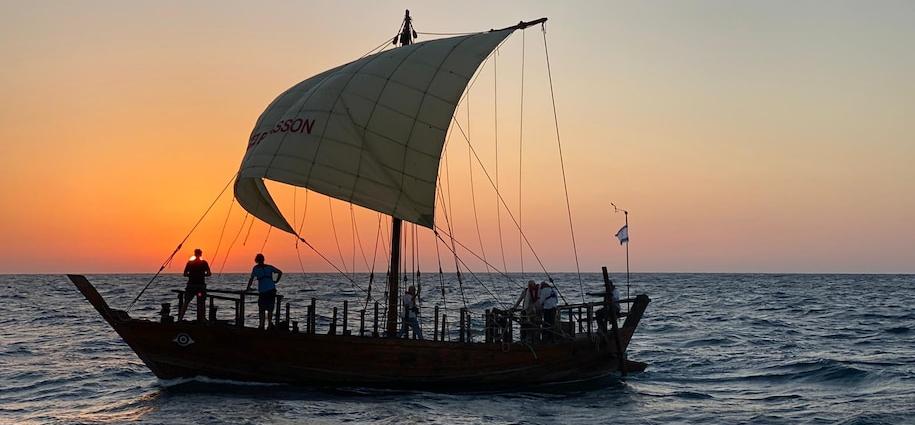
Photo: David Gal
Ancient trade routes in the Mediterranean have long been a mystery. How was it that sailing ships of antiquity, that could not sail well to weather, succeeded in carrying grain and other cargoes from the east to Rome against the prevailing westerly winds?
Israeli researcher David Gal, a Ph.D. candidate at the University of Haifa, studied wind patterns and ancient texts about the weather to find the answer. And then, he and his team sailed a replica of a 5th century BCE ship across part of the Mediterranean to test his theories. The results of his analysis were published this summer in the Journal of Archaeological Method and Theory.
The Washington Post quotes Gal, “We started with a trivial question: How did Roman ships visiting the Levant return to Rome? One would simply say, ‘Oh, they turned them around and sailed the other direction.’ However, a windward journey was not practical in the kind of ships they used. So how did they accomplish these voyages?”
Gal believes these superannuated seafarers took advantage of brief reverses in wind patterns to sail to Rome and other western destinations. Gal said the sailors’ lives depended on anticipating weather patterns, so they knew when to begin a journey and when to find a safe port. They often waited days before catching the right winds to begin or resume travel.
“There’s an ancient story of two friends who are departing and going in opposite directions,” Gal said. “The blessing they give each other is, ‘May the Gods grant us both favorable winds,’ which is a contradiction. Waiting for favorable winds was a big part of ancient seafaring.”
To determine what was possible with a ship from 2,400 years ago, Gal and his team sailed the Ma‘agan Mikhael II, an exact replica of a merchant ship that sank in the 5th century BCE off Isreal near Kibbutz Ma’agan Mikhael.
The shipwreck was discovered in 1985. A large part of its hull was preserved, and after digging and preservation activities that lasted 15 years, researchers were able to reassemble it. The original ship is now located in the Hecht Museum at the University of Haifa. Between 2014 and 2016, a group of volunteers led by Prof. Yaacov Kahanov built the replica ship.
We’ve learned a lot from sailing it, including the difficulties of windward sailing.” They sailed from Israel to Cyprus with a crew of six over the course of 74 hours in 2018.
The second phase of the study involved understanding the weather. In addition to reading 3,000-year-old texts, Gal reviewed modern records of the winds and waves around the Mediterranean.
He collected data points from 7,000 different locations, taken every hour over the past 15 years. He compared these findings with ancient data and made a surprising discovery.
“The wind and wave oscillations are the same as they were 3,000 years ago,” he said. “Once we could establish that modern winds equal ancient winds, we could use the data to analyze sailing mobility. We were able to look at routes the ships took with grain from Alexandria in Egypt, and found that in July and August they had to first sail northeast toward Turkey instead of west toward Rome.”
Gal cited the biblical example of Paul the Apostle. The New Testament records how he was transported from the town of Caesarea in Judea to Rome for trial by Emperor Nero on charges of sedition. The Acts of the Apostles records a protracted trip that involved several vessels.
“It could take weeks to make the journey from the Levant to Rome,” Gal said. “Mariners did a lot of waiting in those days.”
Using computers, Gal crunched all the numbers — old and new — to run cruise simulations. He discovered hundreds of possible trade routes ancient seafarers may have used to crisscross the eastern Mediterranean during the summer months when winds were unfavorable.
“In the summer, they had no option but to crawl their way across the Mediterranean and then start moving westward very slowly,” he said. “Coastal sailing was difficult and dangerous. You might sit for 10 days waiting for a favorable breeze. It took tremendous expertise to do what they did back then.”
Thanks to Roberta Weisbrod, Doug Bostrom, and Doug Faunt for contributing to this post.
